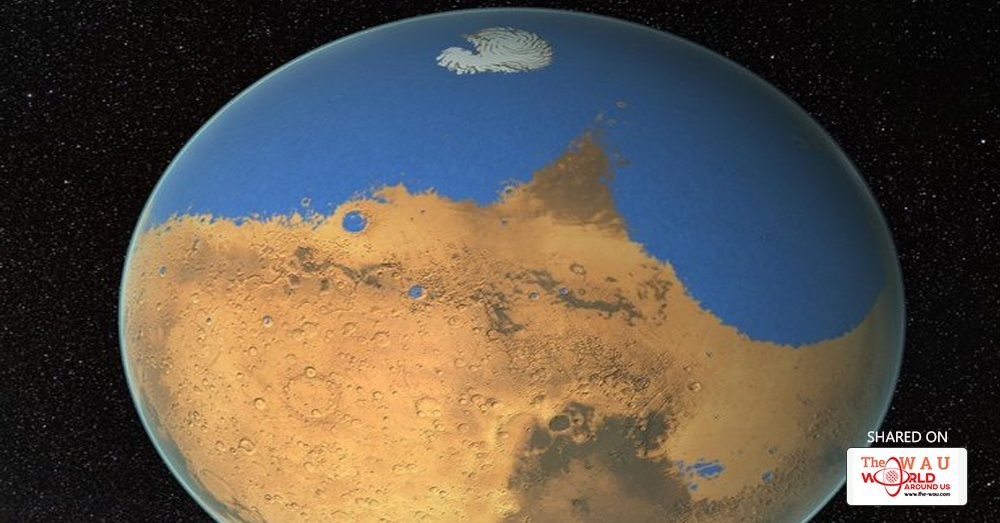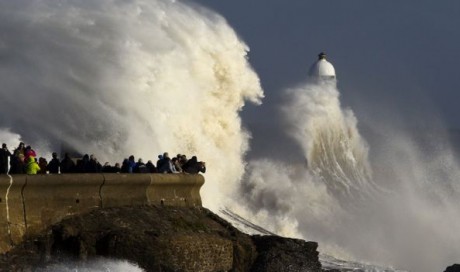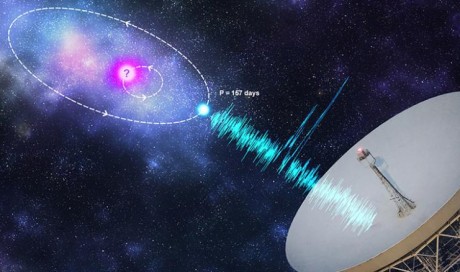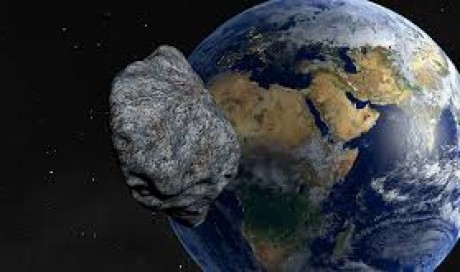When Mars was a wet world, did its oceans experience powerful tsunamis spawned by meteorite impacts?
Imagine an ancient Mars covered with oceans. Every three million years or so, a huge meteorite smacks into the water and generates an enormous wave nearly 400 feet high. The wave crashes well past the shoreline and carries on for hundreds of miles until it finally dries up inland. If this scenario is correct, it could explain some odd elevations scientists have come across while looking for ancient shorelines on Mars.
Our discovery offers a simple solution to this problem; widespread tsunami deposits distributed within a wide range of elevations likely characterize the shorelines of early Martian oceans," said lead author Alexis Rodriguez, a Planetary Science Institute senior scientist, in a statement.

The "Mars ocean" hypothesis has come under debate for decades. But it's clear from looking at the surface that there was way more water 3.5 billion or 4 billion years ago than there is today, given the channels seen from space and the water-soaked rocks found on the surface. Most of that water evaporated, likely because the atmosphere thinned due to solar radiation (a hypothesis the MAVEN spacecraft is investigating today).
Mapping any tsunami event from so long ago is a considerable challenge. Because these events were ancient and sudden, their evidence would be slowly removed by Martian erosion, even the formation of channels in the water.
The team did identify what they believe are two mega-tsunamis in regions of the Martian northern highlands, where they saw sand that was likely put there by these huge events. The younger of the two events is particularly interesting because the deposits appear to be made up of water ice. The team suggests it would be possible to get a lander there with current technology to sample the materials; after all, Mars Pathfinder landed not too far away in 1997.

"The vast areas covered by these ice-rich lobes imply that the frozen remnants of early Mars ocean water might be widespread (and) not just rare and localized occurrences," the Planetary Science Institute added in the same statement.
What's more, the lobes left behind by the tsunamis appear to have strong edges to them - implying that they may not be as eroded as one would fear. If we could sample what's there, the authors suggest, one could get an idea of what that original ocean was made of.
A paper based on the research was published in Nature. Data was obtained using three orbiters at the Red Planet: Mars Odyssey, the Mars Reconnaissance Orbiter and Mars Global Surveyor.

Artist’s impression of an ocean on Mars. Most of the water was later lost to space.

Once again the world is abuzz about water on Mars. Sure, we already know that there's a plentiful supply of water ice at the Red Planet's poles; we knowthat approximately 2 percent of the Martian regolith (at Mars rover Curiosity's location in any case) is composed of water; we also know that ancient Mars was a wet world, possessing rivers, lakes and even seas -- according to the sedimentary rock and minerals that could have only been formed in an abundance of liquid water. But now NASA has found pretty solid evidence that the seasonal short-lived, dark channels seen on steep slopes are formed by salty liquid water gushing over the apparently barren Mars surface
today
Shown here is a 3-D map of the slopes of Hale Crater which is based on observations by the High-Resolution Imaging Science Experiment (HiRISE) camera on board NASA's Mars Reconnaissance Orbiter. The dark channels running down the slopes are known as "recurring slope lineae," and they could be one of the biggest hints yet that some form of basic, yet extreme, microbe may use that water as a means to eke out an existence just below the surface.

After arriving in Mars orbit in 2006, the Mars Reconnaissance Orbiter began an epic campaign of observing the surface in high resolution. In 2011,
the formation of recurring slope lineae, or RSLs, as the southern hemisphere passed from winter to summer. Like drips running down a melting ice cream cone, these dark features resembled flowing liquid water on the Martian surface. However, the finding was not conclusive.

Surface missions to the Red Planet have gradually been forming a picture of the chemicals in the Mars soil, or regolith. Of particular note was the 2008 NASA Phoenix Mars lander that uncovered evidence for droplets of liquid water on the surface. However, liquid water should be impossible on current-day Mars; the atmospheric pressure and temperature is too low for liquid water to persist, water either exists in a solid (ice) or gaseous (vapor) state. Ice doesn't melt on the Martian surface, it sublimates, like carbon dioxide ice (a.k.a. "dry ice") does at room temperature on Earth. The possibility of liquid water on the surface as seen by Phoenix added credence to the possibility that the surface must be rich in a highly toxic salts, known as perchlorates. When mixed with water, these salts lower water's freezing point, potentially allowing liquid water to persist in pools just under the surface, despite the chilly conditions. Since then, NASA's Curiosity has also uncovered evidence for perchlorates laced in the soil.
Image: More evidence for RSLs in Garni Crater, as dramatically shown in this 3-D map constructed from HiRISE data.

Perchlorates form the key behind Monday's grand announcement. Through the use of another instrument on board the Mars Reconnaissance Orbiter, a spectrometer called CRISM (Compact Reconnaissance Imaging Spectrometer for Mars), and using a new analysis technique, scientists have been able to study the chemical composition of these dark RSL channels. What they found was the chemical signatures of hydrated salts -- basically the residue of perchlorates left behind after surges of salty water, known as "brines."

Although exciting, the source of these brines apparently supplying the RSL channels is something of a mystery. Scientists point to the possibility of the seasonal melting sub-surface ice, or perhaps moisture from the atmosphere somehow condensing to supply the flow of water, but neither explanation is satisfactory.
Image: An oblique view from the Mars Reconnaissance Orbiter of slopes in Newton Crater, highlighting warm season flows in Newton Crater.

This may be strong evidence for liquid water flows on the surface of Mars, potentially revealing sub-surface aquifers under an otherwise barren landscape, but scientists are quick to point out that these brines are not particularly conducive to life, at least
life as we know it.
The extreme salinity of the water causing the RSLs would likely be too dense for the survival, let alone evolution, of microbes. But on Earth, despite its toxicity, some microbes in desert locations use perchlorate salts as an energy source. Regardless, the location of these possible outflows would make it very difficult for us to send robotic explorers to check them out. Although researchers are hopeful that perhaps Curiosity may find some RSLs of its own on the slopes of Mount Sharp in Gale Crater, the best way to study them is, currently, from orbit. But it would be nice if we could send a human expedition to the Red Planet to check out these outflows first-hand.
Share This Post














